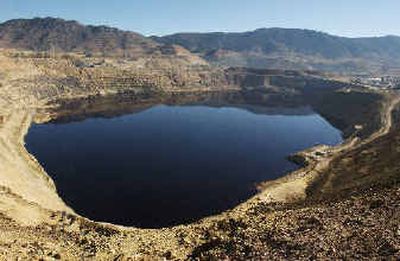History of Butte

BUTTE — Thousands of people come to Montana for its mountain splendor, world-class fishing and Western flavor.
Then there is Butte, the antithesis of the Montana postcard, an old mining town slowly getting off environmental life support.
Sprawled along Interstate 90 against a Rocky Mountain backdrop, Butte pulls in tourists traveling between Glacier and Yellowstone national parks. For those who take the bait — “Recreation! Berkeley Pit! Living History!” — the city delivers on its promise of lots to see.
Berkeley Pit?
It’s a former open-pit copper mine that became a toxic lake. One of America’s largest bodies of contaminated water, the pit began filling in 1982 with the drainage from closed mines. The observation deck offers an unobstructed view of the placid water and the nude, scarred slopes a mile away on the other side.
“It’s a big hole in the ground, that’s for sure,” said tourist George Curtiss of Clarkston. “It’s the remnant of what made a lot of money for a lot of people.”
For many visitors the pit leads the must-see list in a city rich with industrial rawness and Herculean efforts to reverse environmental damage from historic mining. Butte is light on cute contrivances aimed at tourists.
“I came for the history,” said Art Laurey, a California retiree who makes his home in a travel trailer as he explores the country.
In the late 19th and early 20th centuries, the demand for copper wire to electrify the nation caused Butte to boom. In 1920 Butte was a thriving city of 100,000, many of them immigrants who came to work the copper mines: Irish, Finns, Italians, Cornish, Welsh, Serbs, Chinese. It also was a hotbed of labor activism and violence.
The boom didn’t last, however, and after years of decline the population has dropped to about 33,500, as mining companies went elsewhere for riches. Only one mine operates today.
History abounds in Uptown Butte, just beyond a modern strip. Names of old neighborhoods such as Dublin Gulch and Finntown reflect the immigration years.
The National Historic Landmark District covering Uptown includes the old red-light area, where a restored brothel with tours is an easy walk from defunct mines.
Take the guided city tour and see oddities such as the house that had the first lawn in Butte, where industrial pollution killed anything that tried to grow. Not far away are the mansions of the lucky few who reaped the incredible mineral wealth.
This is a heavily Irish city that loves to party, especially on St. Patrick’s Day.
Summer festivities include Evel Knievel Days, celebrating the native son who became a motorcycle daredevil billed as the “master of disaster.”
The third annual festival, July 29-31, will emphasize the 30th anniversary of Knievel’s failed attempt to leap the Snake River Canyon in Idaho on his rocket-powered “skycycle.” Events include extreme motorcycle exhibitions, kids’ activities and a parade and picnic featuring Knievel himself.